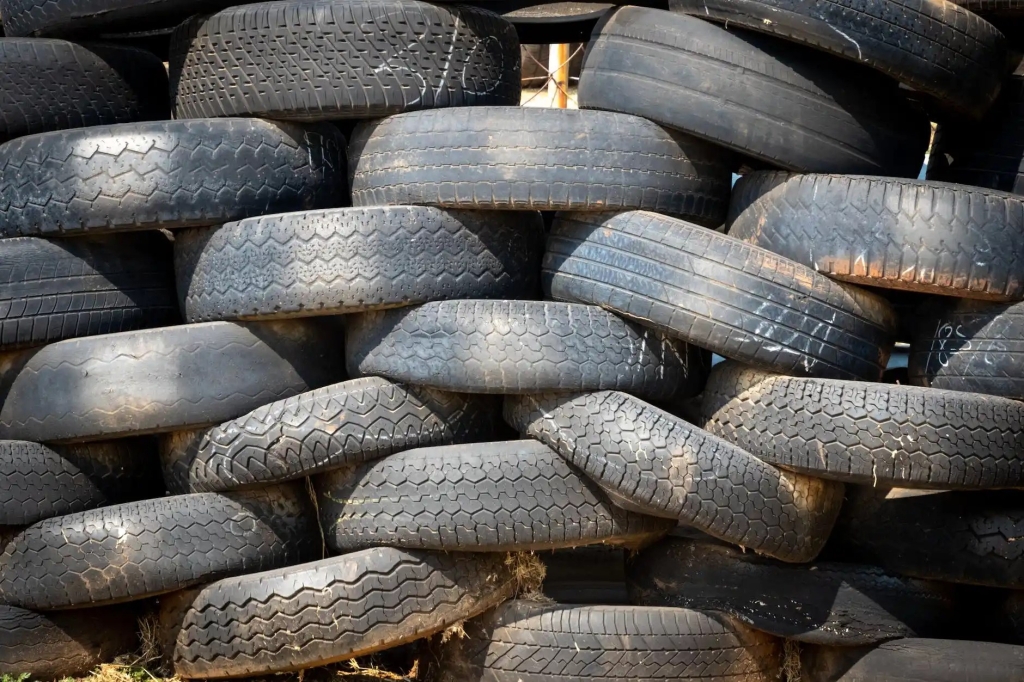Date of Publication: 18 October 2023
One-Line Summary: The Rubber in Your New Tires Cost the Earth 100-square-feet of Deforestation*
Who did it: An international group of researchers led by scientists at the Royal Botanic Garden in Edinburgh, UK.
What did they study: They used remote sensing* of Southeast Asia to look at the growth of rubber plantations* and compare it to the decrease in natural forests at the same location.
What they found: More than 40,000 km2 of natural forest* has been destroyed in order to build rubber tree farms in the last 30 years; 25% of this land is located in the world’s Key Biodiversity Areas*. Almost half of ongoing deforestation due to rubber production takes place within the borders of Indonesia, where an amount of forest the size of Washington D.C. is cut down every 3 months in order to produce rubber for manufacturing.
Why does this matter: When they compared their results to what was already known about deforestation in Southeast Asia authors found that that the actual deforestation happening in the region is at least double the amount that is being used to set limits within the European Union’s Deforestation Regulation, as well as the UK Environmental Act Schedule 17. This means that national and international regulations of the rubber industry seriously underestimate the amount of forest that is destroyed by building new rubber plantations.
What next: Next steps are to look more closely and at the effect of rubber production on the environment; if the environmental cost of rubber is (at least) double what we thought it was in terms of deforestation, we need to re-evaluate the benefits of organic rubber as a commodity.
Our take: Because the manufacture of car-tires is the major use of harvested rubber, decreased use of automobiles in favor of public transportation or work-at-home arrangements would not only reduce the greenhouse gas emissions associated with driving and tire manufacture, it would preserve forests in Key Biodiversity Areas*.
*The basics: 1 billion tires are manufactured each year using rubber harvested at a rate of 186,000 ha per year, according to the study, resulting in about 100 ft2 of deforestation per car. Remote Sensing is the process of taking pictures of the earth’s surface from high above, using satellites. Rubber is produced from the latex of the tropical tree Hevea brasiliensis which is grown in plantations; over 90% of these plantations are located in Southeast Asia. *40,000 km2 is a land area equivalent to the country of Switzerland; it is also equivalent to the US state of Maryland; the study also shows that fully half of this deforestation has occurred since 2000. Key Biodiversity Areas are land areas critical for the survival of unique plants and animals; to date, more than 16,000 have been established worldwide.
Who to talk to: Dr. Eleanor Warren-Thomas, College of Environmental Sciences and Engineering, Bangor University, Bangor, UK: e.warrenthomas@bangor.ac.uk
The paper: Wang, Y., Hollingsworth, P.M., Zhai, D., West, C.D., Green, J.M., Chen, H., Hurni, K., Su, Y., Warren-Thomas, E., Xu, J. and Ahrends, A., 2023. High-resolution maps show that rubber causes substantial deforestation. Nature, pp.1-7.
Journal page: https://watermark.silverchair.com/g51725.pdf
Keywords: deforestation, Indonesia, Southeast Asia, remote sensing, ecosystem

